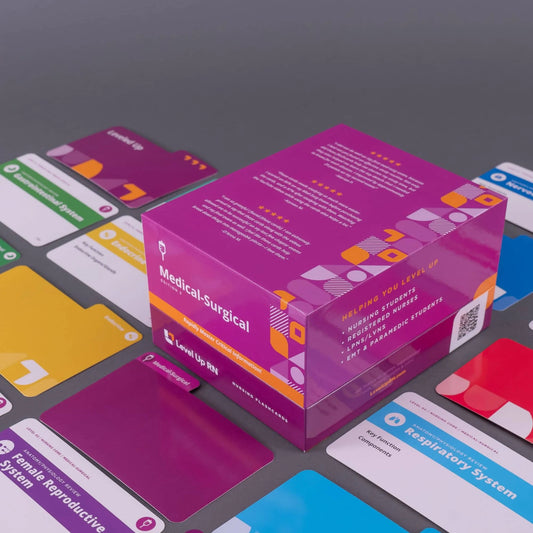Med-Surg - Integumentary System, part 10: Lice & Scabies
Updated: Cathy ParkesParasitic infestations, including pediculosis (i.e., lice) and scabies. Risk factors, signs/symptoms, treatment and patient teaching for lice and scabies.
Full Transcript: Med-Surg - Integumentary System, part 10: Lice & Scabies
Full Transcript: Med-Surg - Integumentary System, part 10: Lice & Scabies
Hi, I'm Cathy with Level Up RN. In this video, I will be discussing parasitic infestations, including pediculosis and scabies. If you have our Level Up RN medical surgical nursing flashcard deck, I am all the way in the back to the second to the last card in the integumentary system. At the end of this video, I'm going to give you guys a little quiz to test your knowledge of some of the key points I'll be covering in the video so definitely stay tuned for that. Pediculosis is a fancy name for a lice infestation. So pediculosis capitis is a lice infestation on the head, pediculosis corporis is a lice infestation on the body, and pediculosis pubis is a lice infestation in the pubic area. So pediculosis is very common in school-aged children. It is typically spread through head-to-head contact, but it can also be spread through objects such as brushes, hats, as well as pillows. Symptoms of a lice infestation include pruritus, so itching, as well as sleeplessness. And then upon inspection, you can see the lice and/or the presence of nits, which are lice eggs. Treatment of pediculosis includes the application of a pediculicide, such as permethrin, which is available over the counter. After treatment, you want to carefully check the hair and comb through the hair with a special nit comb to remove any lice and nits. To prevent reinfestation, it's important to wash clothes and linens in hot water. For items that can not be washed in hot water, they should be placed in a tightly sealed bag for approximately two weeks. And then other household members should be checked and treated as well.
Moving on to scabies now. Scabies is the infestation with mites. And risk factors that place an individual at higher risk for getting scabies include poor hygiene as well as crowded living conditions. Signs and symptoms of scabies include intense pruritus, so intense itching, as well as a pimple-like rash, and the presence of burrows, which appear as gray-white lines. So burrows are created when female mites are tunneling just under the skin surface. And mites particularly like to burrow in the skin between the fingers. So that is where you will often see those burrow marks. Scabies is treated with a scabicide, such as permethrin, which is the same medication we use to treat a lice infestation. However, 5% permethrin is used in the treatment of scabies, which does require a provider's prescription versus the 1% permethrin that is used in the treatment of lice, which is available over the counter. So the 5% permethrin needs to be applied from head to toe and left on for an extended period of time, like 8 to 14 hours, and then it needs to be reapplied one week later. Treatment is recommended for household members as well as sexual partners. And just like with lice, we need to wash linens and clothes in hot water. And for items that can not be washed in hot water, we need to place them in a tightly sealed bag for several days.
All right, it's quiz time, and I have three questions for you. Question number one, with an infestation of lice, how should patients care for their clothes or linens? The answer is they should wash them in hot water, or for items that can not be washed in hot water, they should be placed in a tightly sealed bag. Question number two, what key medication is used to treat both lice and scabies? The answer is permethrin. Question number three, grayish-white lines between the fingers are indicative of pediculosis. True or false? The answer is false. So burrows which present as grayish-white lines between the fingers are indicative of scabies and not of a lice infestation. Okay, that is it for this video. I hope you have found it super helpful. If so, be sure to hit that like button. Take care, and good luck with studying.
[BLOOPERS] Or for items that can not be washed in hot water, they should [inaudible].


